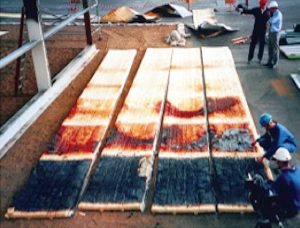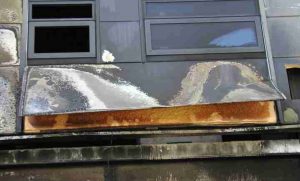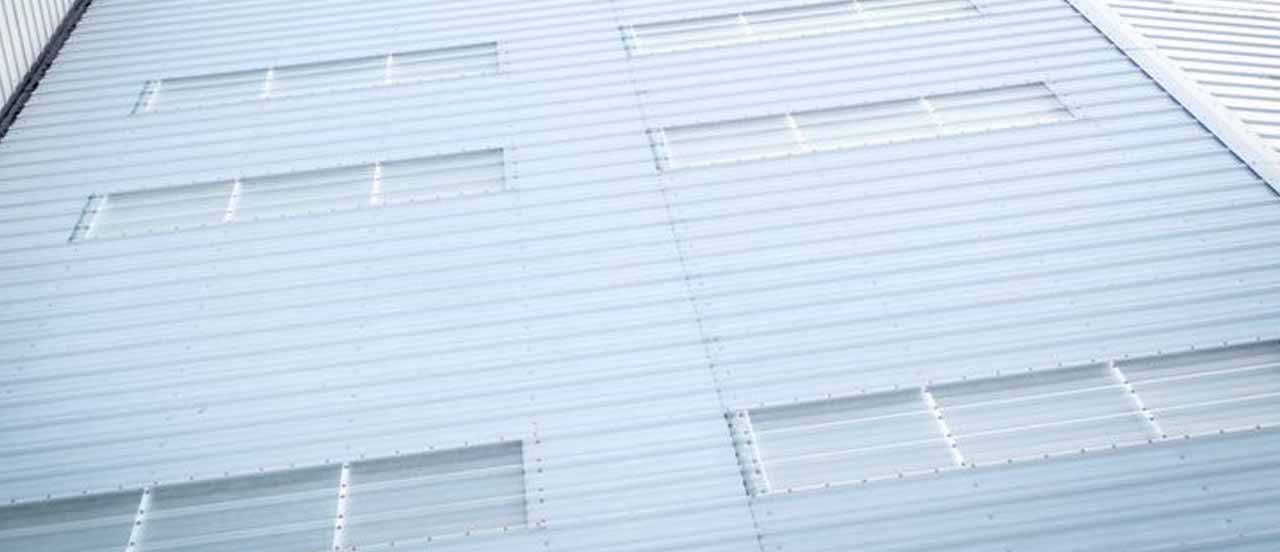The use of acronyms and specific terminology is inevitable in a complex industry such as construction, but there is a danger that the true meaning can get lost or descriptions misapplied. One such term which is used frequently but often with little understanding of what it entails is ‘PIR’.
PIR is a widely-used shorthand term for ‘polyisocyanurate’, which provides us with one of the most thermally efficient commonly available insulation materials in the industry today. Like other organic materials, it is composed of complex hydrocarbon chains, and is classified as ‘combustible’. Unlike many other organic products where performance is largely a function of geology, geography, processing and orientation, PIR can be precisely engineered from first principles to achieve specific and repeatable performance characteristics.
However, the problem is that combustible insulation is a term that is applied for a variety of insulation products, many of which are commonly used throughout the industry but do not have the performance characteristics of PIR, most notably Polyurethane/PUR/PU insulation, and polystyrene based insulants (EPS and XPS). Note that polyethylene/PE foam is sometimes mistakenly referred to as insulation, but is in fact used as a filler in some products, and offers no insulating properties. There is some variation in the quality and performance of PIR products depending upon what standard they are manufactured to, the precise composition of the material, and the context in which they are used, so it is important to look for appropriate certifications.
So, what is PIR?
PIR is a thermoset polymeric material that combines isocyanates and polyols. The manufacturing process creates a cross-linking chemical reaction that results in a robust, rigid material that does not melt when heated. By comparison, a thermoplastic material, such as polystyrene or polyethylene, will soften and become liquid on heating.

The chemical reaction of combining liquid polyol and isocynates produces a wet, tacky foam which then hardens and sets during the manufacturing process. Image supplied by Insulation Manufacturers Association (IMA).
EPIC members produce steel faced insulated panels with a PIR core. PIR is the part of the product which gives the panel its excellent thermal properties, in addition to contributing to its proven structural and fire performance.
Specifying PIR insulated panels
When we talk about combustible insulation products, people may believe they all perform the same. In reality, this is far from the case, so perhaps we need to clarify two more terms here.
‘Combustible’ and ‘flammable’. These two words have been frequently used interchangeably, which has caused both confusion and concern. Whilst both technically mean they are capable of burning, there is a difference between the two. ‘Combustible’ is a blanket term which means that the material could be ignited under specific conditions. On the other hand, ‘flammable’ is a sub-category of combustible materials which means that they are more volatile, can be easily ignited and self-sustain a flame after exposure. If we’re looking at ‘limited combustibility’, these are materials which may react to fire exposure but their response is expected to be more stable and they typically don’t self-sustain a flame once the heat-source is removed.
It’s important that we make this distinction because products such as EPIC-member panels have proven fire performance but are technically classed as ‘combustible’, even though they can perform similarly to non-combustible systems in large scale system tests, and indeed in real fires as we will see in more detail later in this blog.
One way to be assured of the fire performance of PIR core insulated panels is to check whether they have achieved insurer approved certification via large scale system testing from either the Loss Prevention Certification Board (LPCB), or FM Global.
Charring
The LPCB certified PIR core of EPIC-member manufactured insulated panels is engineered to form a stable char when exposed to fire. The char protects the insulation beneath it during contact with a flame but also ensures that, once the fire source is removed or extinguished, the PIR self-extinguishes too.
Independent research has been carried out on buildings that have experienced a real fire and contain EPIC-member insulated panels. The findings demonstrated that there was no flashover, no fire propagation and no panel collapse. Examination of the panels following tests also reveal no flame spread in the core of the panel.


Two different examples of how the formation of a stable, protective char can help to prevent fire spread and demonstrates the excellent in-use performance of insurer certified EPIC-member PIR panel systems.
PIR in action
EPIC’s real life fire case studies are publicly-accessible reports and cover different types of fire, both internal and external to the building envelope. The real fire case studies have established that members’ LPCB certificated PIR panels perform extremely well and without significant contribution to the fire, even when the insulation core is directly exposed to a fire source.
One such example is the RA Wood Adhesive Tapes case study, where evidence suggested that temperatures were in excess of 650°C. But, as designed, the PIR core of the insulated panels used on the adjoining building formed a stable char, which successfully provided an effective fire stop between the steel skins of the cladding at the head of a compartment party wall. It is believed that this prevented the fire from spreading to the building next door, which allowed the neighbouring joinery business to continue trading as usual the following day.
Insurer standards
Since 2004, EPIC member insulated panel systems have been manufactured to satisfy the requirements of the LPCB – LPS 1181-1 and/or Factory Mutual – FM 4880/4881/4471 – class 1 certifications. They are one of the most widely tested and thoroughly researched of the commonly used construction systems. They are designed to the highest factory standards with engineered joints for maximum fire protection and security, providing an assurance that there is:
- Structural integrity
- No instant release of heat load nor any rapid flashover during a fire
- No hidden flaming, smouldering or fire spread within the PIR core of the panel
Further benefits
In addition to fire performance, EPIC-member panels are specified for many other reasons, including:
- Energy efficiency
- Lightweight, slim construction
- Ease and speed of installation
- Design flexibility
- Factory in-built quality
- Excellent air and weathertightness
- Single component reduces on site waste and carbon footprint
As a trade association, we work closely with our members to ensure their expertise benefits the industry. This includes the creation of guides for construction professionals, informing Government consultations and documents, and working with other industry bodies. If you would like more information, please contact us on info@epic.uk.com
Dictionary/thesaurus links:
Related content:
EPIC fire research and case studies

